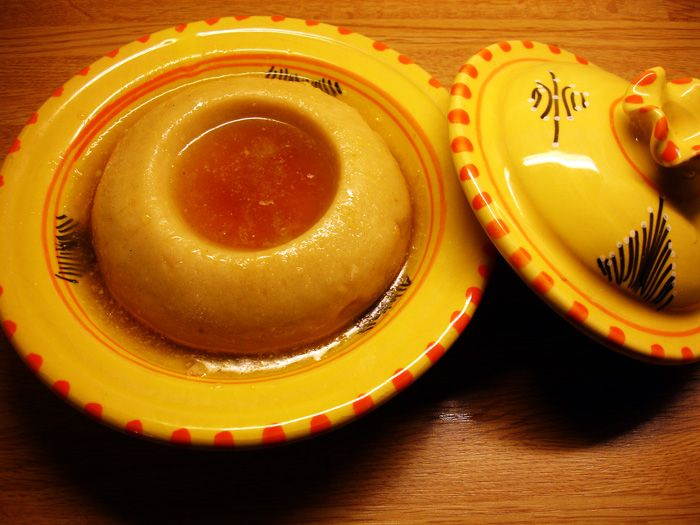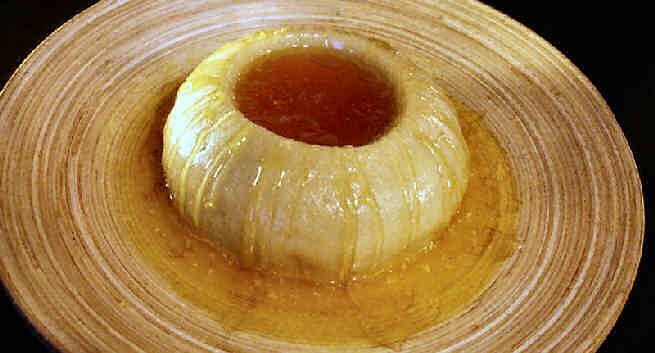Asida (flour pudding )

Asida is a type of boiling flour pudding that is prepared directly in water. It is a famous traditional meal prepared in Libya during holidays such as Eid. It is formed with wheat flour or whole-meal flour dough that has been boiled in water and is served with honey or date syrup and melted butter. Instead of butter, some individuals use olive oil or samn (ghee). It is typically consumed at breakfast. Asida, like bazeen, is a communal meal served on a big flat plate or gas'a, and it is typically eaten with the fingers, however, spoons can be used. While Bazeen is a uniquely North African cuisine with Amazigh origins, this boiled flour pudding has an Arabic name, and variations of Asida are cooked in the Arabian Peninsula.
Ingredients:
(Serves 4)
- 25g butter
- 1tsp salt
- 300g flour
- 1 litre boiling water
Instruction:
- Fill a deep pot with ½ litre of hot water. Add 25g butter and a teaspoon of salt. Then, leave on medium heat until the water starts to boil.
- Sift the flour then pour it into the pan all at once, then remove from heat. Next, immediately start to stir the flour into the buttery water and press the dough against the side of the pot to remove lumps.
- Once the dough is smooth, with the help of the wooden spoon form it into one lump. Put the pot back on the heat and add another half liter of boiling water.
- Use the wooden spoon to form some hollows in the dough. Do not cover and leave to cook on low heat until the water is absorbed. Midway during this process, turn the lump upside down.
- The dough’s cooking takes about 20 minutes. Then remove from heat. Immediately begin kneading, using a wooden spoon to smooth the asida. If you have a machine that will knead bread dough, then it will handle Asida fine.
- Melt about 75g of butter or samn (ghee). Brush a wide plate with butter.
- Place the asida in the center and begin folding in the edges to form a smooth dome.
- Once the edges are folded in, roll the asida to even out any cracks. Turn upside down and use a buttered ladle to form a hollow in the aside.


